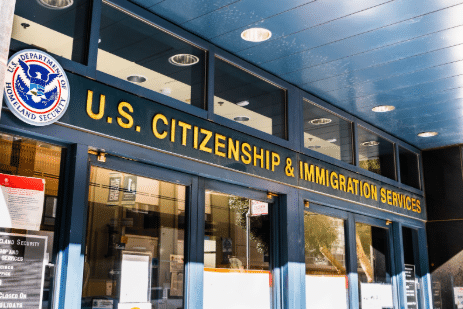
The Polls Are Tight, But Can You Trust Them?
Election Headed for Photo Finish
It’s hard to believe, but the election is now under a month away. How does the race look today? Let’s talk about the polls.
Polls are an indispensable tool in election analysis and forecasting despite many flaws. The first thing to say about polls is that they’re snapshots, not movies. They help you understand where the contest stands today, but not necessarily where the race is going.
I recently did a deep dive on the flaws in polling methodology and highlighted the small number of polling firms that actually do produce somewhat reliable results.
There’s no need to repeat all that here but some highlights include polling “registered voters” instead of “likely voters” and using sample sizes that are too small (a sample of at least 1,300 respondents is needed for reliable results; many polls use only 800 respondents).
Skewing samples to include too many Democrats and Black voters also produces results favoring Democrats.
There are ways to adjust for these flaws but they’re inexact. The simplest way is just to assume that Trump is doing one to two points better than published results once the skews and error margins are backed out.
That’s good news for Trump but it still leaves an incredibly close race.
Here are the latest results from the RealClearPolitics poll of polls average with the leader and the size of the lead expressed in percentage points:
National: Harris +2.1
Georgia: Trump +1.5
North Carolina: Trump +0.6
Pennsylvania: Tied
Arizona: Trump +1.4
Wisconsin: Harris +0.8
Michigan: Harris +0.7
Nevada: Harris +1.1
There are a few other states that are not generally regarded as battleground states but are close enough that they could offer some surprises including unexpected paths to victory on Election Day.
These include Virginia (Harris +6.4), Minnesota (Harris +4.7) and New Hampshire (Harris +7.4). If Trump were to score an upset victory in any of these three states, it could partly compensate for the loss of one or more of the battlegrounds.
The current “No Toss-Up” map from RealClearPolitics shows Trump winning the election with 281 electoral votes compared to 257 for Harris. (270 electoral votes are needed for victory.)
However, that map gives Pennsylvania to Trump. If Pennsylvania were moved to the Harris column (entirely possible), then Harris would win the Electoral College 276 to 262, quite close but still a win for Harris.
There are thousands of permutations on the outcome by switching certain states from one column to the other. The bottom line is this election is still extremely close and the outcome highly uncertain.
RealClearPolitics is a reliable source, but the poll of polls average suffers from the fact that the average is derived from about 20 separate polls conducted on irregular dates by various organizations.
This leaves two problems: The first is that if there are flaws in the underlying polls (there are) those flaws will be carried over into the average.
The second problem is that some of the underlying polls in the average are stale and therefore the average tends to lag trends by a few days to a week. That doesn’t mean the result isn’t useful; it just means the result has to be evaluated in the context of these lags.
Trump is performing better nationally and in every state in the Rasmussen poll than the RealClearPolitics average with the exception of Arizona where the results are the same. Given that Rasmussen is among the most reliable pollsters, this is good news for Trump.
Trafalgar polling is also considerably better for Trump than the RealClearPolitics average except for Arizona where the pro-Trump results are stronger in RealClear. The Trafalgar results are also closely aligned with the Rasmussen results where both sites polled the same states.
Since Trafalgar and Rasmussen are both more accurate than other pollsters, the fact that the two align lends credence to the results and is more good news for Trump. Crucially, Trafalgar is showing Trump with a clear lead in Pennsylvania.
As I show you below, Pennsylvania is the single most important state when it comes to various paths to victory in this election. But it’s more complicated than that.
I also show you the multiple paths to victory for both Harris and Trump. Who’ll likely emerge the winner? Read on.
The Race to 270
By Jim Rickards
Political analysts speak of something they call the “path to victory” with victory defined as 270 electoral votes or more. There are a total of 538 electoral votes available from the 50 states and D.C. A tally of 270 electoral votes is a bare majority of the total and that’s enough to win the White House.
For each candidate, the path to victory is a list of states that you can win that add up to 270 or more electoral votes. This is where the concept of battleground states comes in. Harris is all but certain to win a list of states including California (54), New York (28) and Washington (12).
Trump is all but certain to win another list of states including Tennessee (11), Indiana (11), Kentucky (8) and Louisiana (8).
Those “sure thing” states are followed by a list of likely states. For Harris, these include Illinois (19), New Jersey (14) and Virginia (13). For Trump, these include Texas (40), Florida (30) and Missouri (10).
Once these sure-thing and likely states are added up, Harris has 215 electoral votes and Trump has 219. Both candidates fall short of 270 votes at this stage.
This brings us to the true battleground states (or “toss-ups”) of Arizona (11), Georgia (16), Michigan (15), Minnesota (10), Nevada (6), North Carolina (16), Pennsylvania (19), Wisconsin (10) and a portion of Nebraska (1), which divides votes by congressional districts.
There are 104 electoral votes in this toss-up category. Trump needs 51 of those 104 toss-ups to win. Harris needs 55.
Trump’s path to victory is straightforward. He needs to win all of the states he won in 2020. That seems highly likely as of now although the race is close in North Carolina according to RealClearPolitics. He also needs to flip Arizona and Georgia to his column.
He lost both in 2020 but is ahead in both as of now according to RealClearPolitics, Rasmussen, Trafalgar and The New York Times. With Arizona and Georgia in hand, Trump only needs to win Pennsylvania to cross the 270-vote threshold. He could lose Wisconsin, Michigan and Nevada and still win the White House if he takes Pennsylvania.
Of course, there are alternative paths. Trump could lose Pennsylvania (19) and still win the White House if he takes Virginia (13) and Nevada (6). That’s a wash. Trump could lose Pennsylvania and still win if he takes Michigan (15) and Wisconsin (13).
Or Trump could lose Pennsylvania and Wisconsin and still win if he takes Michigan and Nevada. You get the point. There are numerous paths to victory.
The path for Kamala Harris is more challenging but still feasible. She begins with the Northeast-Mid-Atlantic base of Maine, New Hampshire, Vermont, Massachusetts, Rhode Island, Connecticut, New Jersey, Delaware, Maryland, D.C. and Virginia.
Then she picks up the liberal West Coast states of Washington, Oregon, California and Nevada, with Colorado, New Mexico, Hawaii and one Nebraska district thrown in for good measure. She pushes toward 270 with the Blue Wall states of New York, Michigan, Illinois, Wisconsin and Minnesota.
The problem is that all of those states and D.C. combined give her only 257 electoral votes, still 13 short of the target of 270. How does Kamala close that gap? You guessed it. Pennsylvania. If Kamala Harris wins Pennsylvania’s 19 electoral votes on top of the other states listed, then she is the next president.
It’s clear that Kamala’s path is much narrower than Trump’s. Trump has a few wild cards that could land in his favor including surprise victories in Virginia, Nevada, Michigan and Wisconsin. Some combination of those could pad his lead or compensate for a loss in Pennsylvania.
Harris has no margin for error. She’s extremely unlikely to pick up any of the Trump states. She has to hold on to Virginia and Nevada. And she has to win the entire Blue Wall including Pennsylvania. Trump has a bit of wiggle room while Harris has to run the table. And that’s exactly what she’s trying to do.
Harris based her campaign on a version of Biden’s 2020 “basement strategy”: Stay hidden, don’t take questions, cater to rich donors, don’t be specific and just try to run out the clock with joy and good vibes.
But it’s not working. Voters want answers to their everyday problems of inflation, crime, illegal immigrants taking jobs and new wars breaking out. Harris doesn’t have any. This could be her undoing.
Trump continues to focus on the key issues (inflation, immigration, crime, jobs) now aided by J.D. Vance’s successful debut to a national audience in the VP debate. Voters are far more interested in those issues than in name-calling and other distractions.
Trump has a clear path to victory and is gaining in the polls. He simply needs to maintain message discipline, ignore sideshows and keep up with his rally schedule and paid advertising to win this election.
Even if Trump can win the election with 270 or more Electoral College votes, likely as of now, the fight will not be over. The Democrats have another lawfare trick up their sleeves.
If Democrats retake the House of Representatives, then on Jan. 6, 2025, the New Democrat-controlled House could pass a resolution that Trump is an “insurrectionist” and disqualify his electoral votes under Section 3 of the 14th Amendment.
Kamala would not have 270 electoral votes needed to win. This would throw the election of the president to the House of Representatives voting as state delegations, not as individuals. Under the XII Amendment (1804), only Kamala Harris could receive votes for president assuming Trump was disqualified and no other candidate won any electors at all.
J.D. Vance would suffer no insurrectionist disqualification. So the result could be Kamala Harris as president and J.D. Vance as vice president (similar to Jefferson and Burr in 1800).
Another possibility is that the Republican-controlled state delegations in the House could boycott the presidential vote in which case a quorum would be lacking. In that case, the vice president (J.D. Vance) “shall act as president” under the XII Amendment. This is not a far-fetched scenario. Democrats led by Jamie Raskin have already set the wheels in motion.
Trump has 28 days to flip the narrative on Kamala Harris and win the election. If he does, the Democrats have a doomsday plan they will unveil on Jan. 6, 2025, to disqualify Trump.
The bottom line is that even when this election is over it won’t be over.
Originally sourced from Daily Reckoning
The financial market is crumbling and EVERYONE will be affected. Only those who know what's going on and PREPARE will survive... dare we say thrive. Our 7 Simple Action Items to Protect Your Bank Account will give you the tools you need to make informed decisions to protect yourself and the ones you love.











